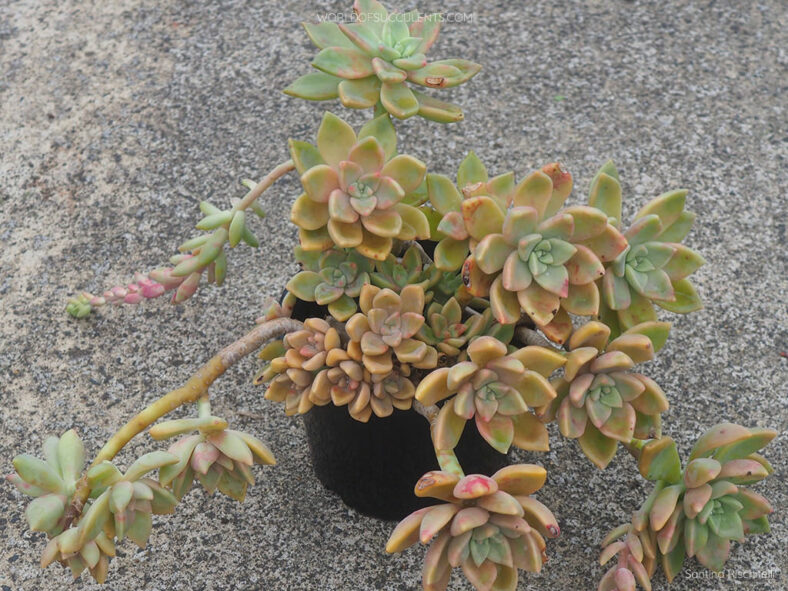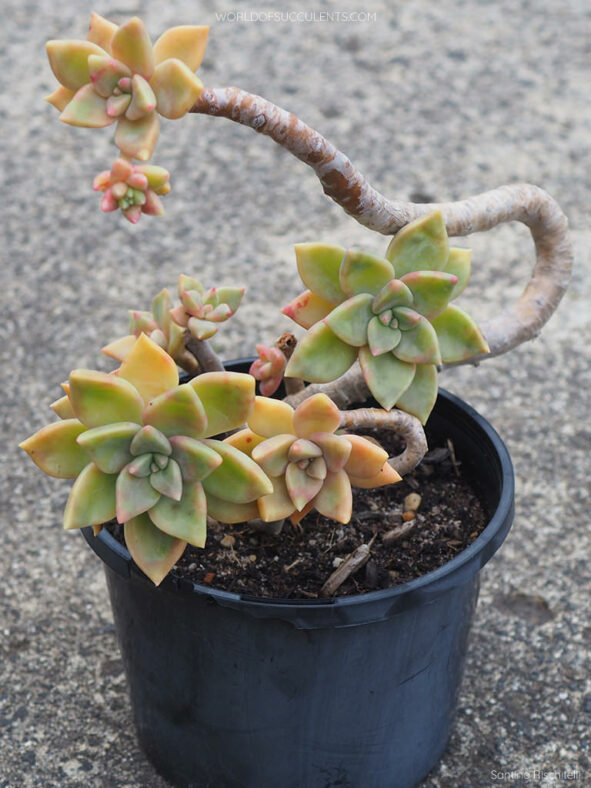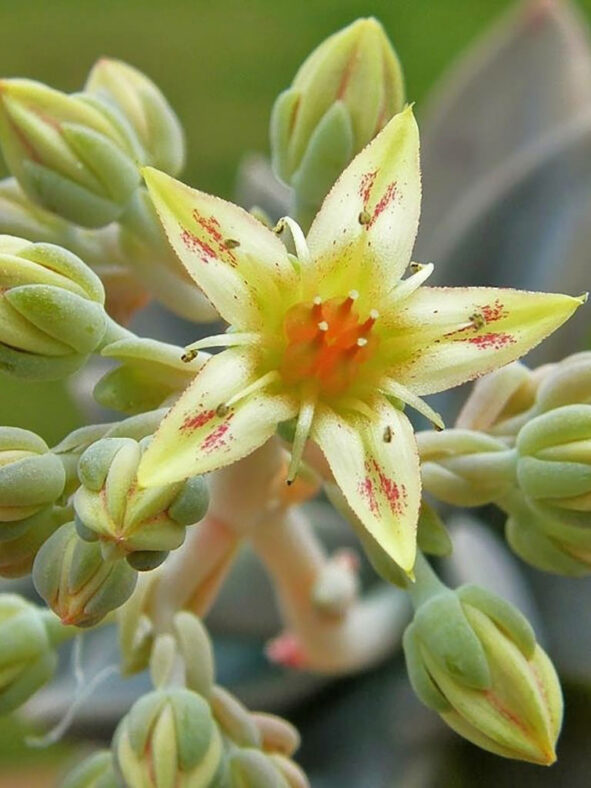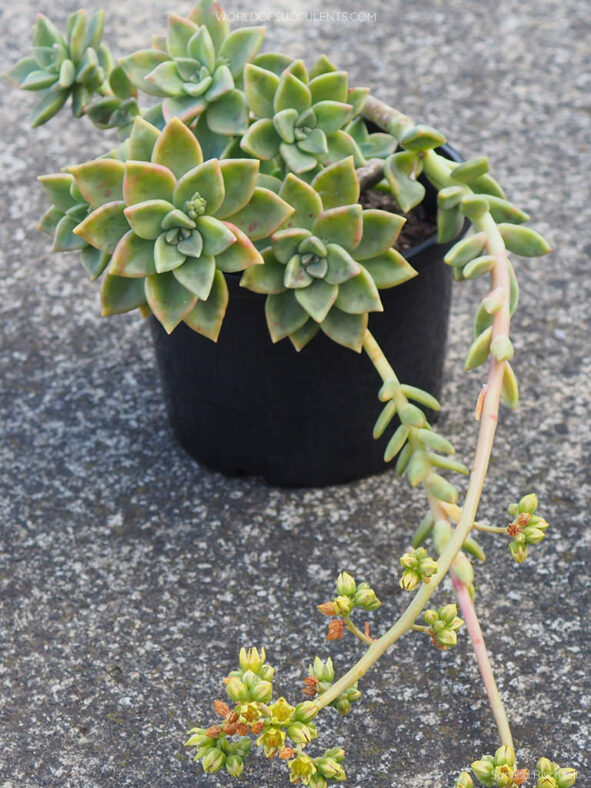×Cremnopetalum 'Fred Wass' is an intergeneric hybrid first described by Ray Stephenson in the Sedum Society Newsletter in 2006.
Scientific Name
×Cremnopetalum 'Fred Wass'
Scientific Classification
Family: Crassulaceae
Subfamily: Sempervivoideae
Tribe: Sedeae
Nothogenus: ×Cremnopetalum
Origin
×Cremnopetalum 'Fred Wass' is a hybrid that results from a cross between Cremnophila nutans and Graptopetalum paraguayense.
Description
×Cremnopetalum 'Fred Wass' is a succulent shrublet that forms rosettes of lance-shaped, powdery blue-green leaves at the end of initially arching then falling stems. The stems are fleshy, woody at the base, basally branched, and can grow up to 12 inches (30 cm) long and 0.7 inches (1.8 cm) in diameter. The leaves are narrower than those of Graptopetalum paraguayense, not as thick as those of Cremnophila nutans, and take on beautiful pink to brown hues when exposed to full sun. They can measure up to 1.6 inches (6.5 cm) long, up to 1.1 inches (2.7 cm) wide, and 0.4 inches (1 cm) thick.
During spring, the plant produces clusters of flowers on leafy stalks that can grow up to 8 inches (20 cm) long. The flowers have sepals the same color as the leaves and pale greeny-white petals that have dark red patches and are more greeny-yellow in the upper third.

How to Grow and Care for ×Cremnopetalum 'Fred Wass'
Light: ×Cremnopetalum 'Fred Wass' requires full sun to partial shade for optimal growth. Therefore, place it near the brightest window in your home. In addition, if you plan to move the plant outside in spring, do it gradually and avoid exposure to intense afternoon sun.
Soil: Having soil that drains quickly is most important for growing a healthy succulent. While many growers prefer to create their own soil mix, commercial soil for succulents will work fine.
Temperature: High temperatures are not a problem as long as there is plenty of fresh air, but ×Cremnopetalum 'Fred Wass' is a tender succulent and must be brought indoors if there is a risk of freezing temperatures. It grows best in USDA Plant Hardiness Zones 10a to 11b, with average minimum winter temperatures ranging from 30 to 50 °F (-1.1 to 10 °C).
Watering: This plant prefers the "soak and dry" method during the growing season. Water deeply and let the soil completely dry out before watering again. Water sparingly during the winter, only enough to keep the plant from shriveling. Above all, if you have a saucer under the pot, do not forget to empty the excess water.
Fertilizing: Although it can grow well without fertilizer, ×Cremnopetalum 'Fred Wass' may benefit from extra nutrients. Feed only during the growing season and use a water-soluble fertilizer diluted to half the recommended strength.
Repotting: If growing this plant in a container, repot as needed in spring or early summer, but ensure the soil is dry before you start. Also, always use a container with drainage holes.
Propagation: ×Cremnopetalum 'Fred Wass' is easily propagated by leaves or offsets. Therefore, spring is the best time to take leaf cuttings or separate offsets.
Learn more at How to Grow and Care for Echeveria.
Toxicity of ×Cremnopetalum 'Fred Wass'
×Cremnopetalum 'Fred Wass' has no toxic effects reported. However, although it is safe for growing around children and pets, it is not advisable to eat it.
Links
- Back to nothogenus ×Cremnopetalum
- Succupedia: Browse succulents by Scientific Name, Common Name, Genus, Family, USDA Hardiness Zone, Origin, or cacti by Genus
Photo Gallery
Click on a photo to see a larger version.


